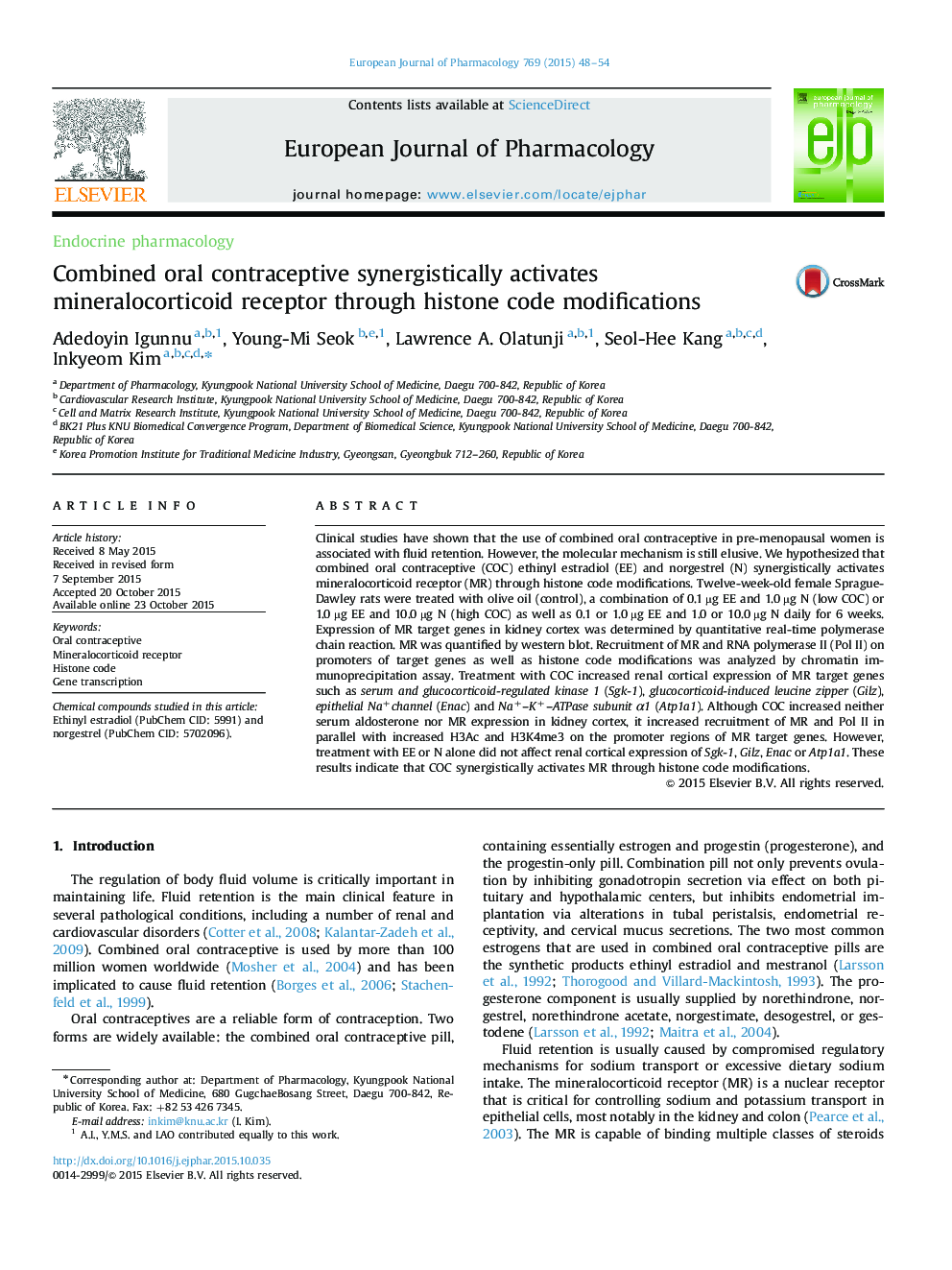| Article ID | Journal | Published Year | Pages | File Type |
|---|---|---|---|---|
| 2531306 | European Journal of Pharmacology | 2015 | 7 Pages |
Clinical studies have shown that the use of combined oral contraceptive in pre-menopausal women is associated with fluid retention. However, the molecular mechanism is still elusive. We hypothesized that combined oral contraceptive (COC) ethinyl estradiol (EE) and norgestrel (N) synergistically activates mineralocorticoid receptor (MR) through histone code modifications. Twelve-week-old female Sprague-Dawley rats were treated with olive oil (control), a combination of 0.1 µg EE and 1.0 µg N (low COC) or 1.0 µg EE and 10.0 µg N (high COC) as well as 0.1 or 1.0 µg EE and 1.0 or 10.0 µg N daily for 6 weeks. Expression of MR target genes in kidney cortex was determined by quantitative real-time polymerase chain reaction. MR was quantified by western blot. Recruitment of MR and RNA polymerase II (Pol II) on promoters of target genes as well as histone code modifications was analyzed by chromatin immunoprecipitation assay. Treatment with COC increased renal cortical expression of MR target genes such as serum and glucocorticoid-regulated kinase 1 (Sgk-1), glucocorticoid-induced leucine zipper (Gilz), epithelial Na+channel (Enac) and Na+–K+–ATPase subunit α1 (Atp1a1). Although COC increased neither serum aldosterone nor MR expression in kidney cortex, it increased recruitment of MR and Pol II in parallel with increased H3Ac and H3K4me3 on the promoter regions of MR target genes. However, treatment with EE or N alone did not affect renal cortical expression of Sgk-1, Gilz, Enac or Atp1a1. These results indicate that COC synergistically activates MR through histone code modifications.
